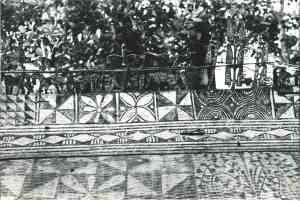The documents presented (or simply indexed) on the site belong to various periods and have various origins. They have one common characteristic however; except a few recent videos accessible on
http://www.youtube.com
realised in Vietnam to promote artists belonging to Montagnard communities, they were made for a Western public by Westerners (or by Vietnamese or Chinese working for European patrons). It should not therefore come as a surprise that they illustrate an oriented vision; a statement of fact carrying no judgment on their value as artistic or simply human testimony. And one may safely imagine that, should the Montagnards have been the authors of the majority of images in the site, we Western viewers would be hard put to understand documents based on codes of representation very different from ours
1
.
|
Now, considering the variety of sources: they range from drawings or engravings illustrating articles in the press, sometimes drawn from texts not life; to sections of films edited on an ethnographic basis not to mention exotic and erotic shots in a colonial context. Authors are just as various, from the simple tourist taking snapshots as he visits the uplands to the ethnologist creating documents in a long period of life dedicated to the study of these populations.
In our time, when non-professional ethnographers like missionaries, military men and colonial administrators have been accepted as part of the ethnographic production, one sees no valid reason for not integrating photographers too. Some of them indeed have felt the need to go further, beyond the mirror of their own produced images; and they have managed to address a reality which challenged both them and their photographs.
|
|

